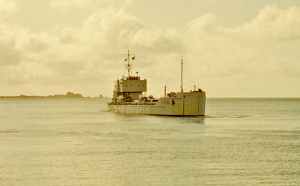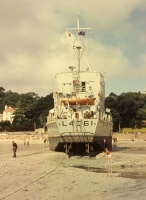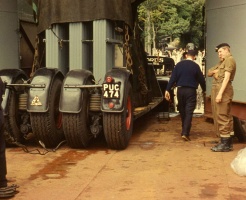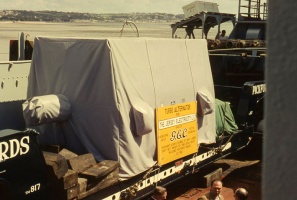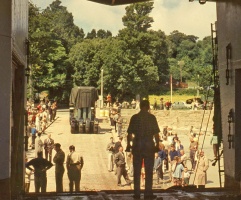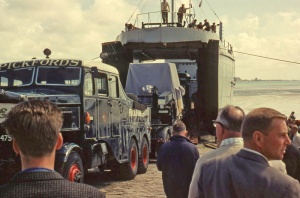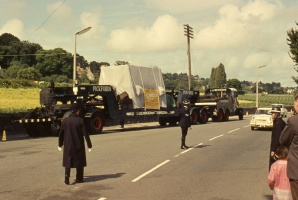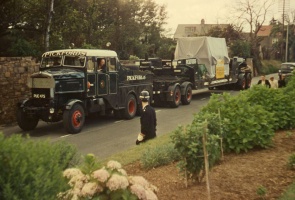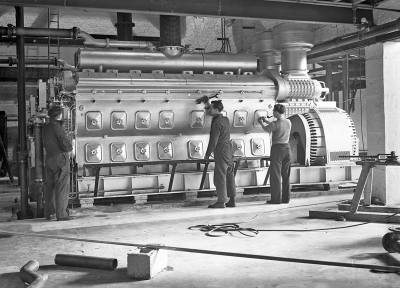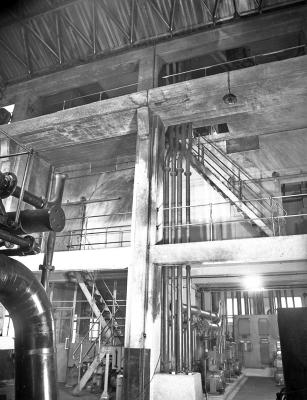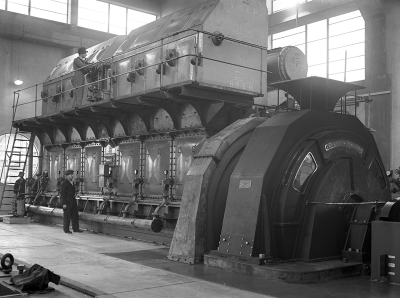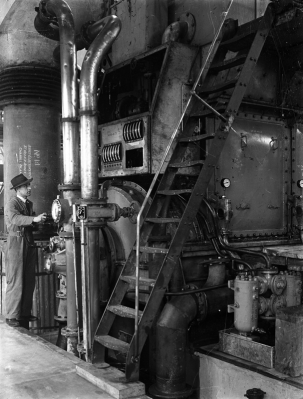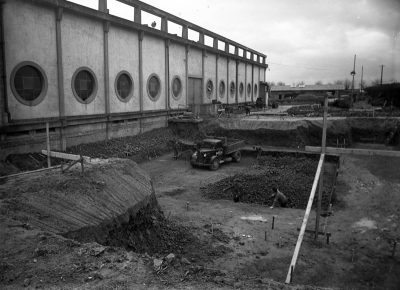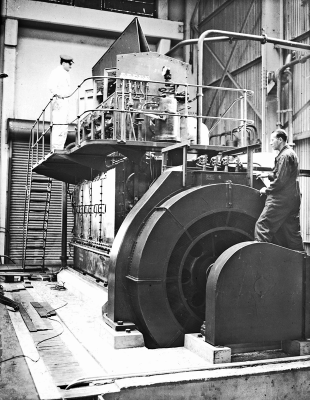Electricity
TIMELINE
|
|
From the Jersey Electricity Company website
|
Jersey did not have a mains electricity supply until 1924, over 40 years after the world’s first service was established in Godalming, Surrey. This was largely because much political infighting and a battle with the vested interests of gas suppliers caused many years delay after the initial States decision in 1897 to light the streets with electricity.
As early as 1883 some companies and individuals installed generators to provide electricity for their own premises - notably A de Gruchy and Co, who lit their arcade in this way.
Newspaper opposition
Electricity companies, including Channel Islands Electric Light and Power Company, were established, but failed to gain much business, partly because of the opposition of newspapers such as the British Press and Jersey Times which wrote in 1880:
- "Electric lighting cannot, so far, be regarded as a success in itself."
Despite considerable doubts about the 'new' source of power, a proposal was put to the States on 23 February 1897 to replace gas street lighting with electric. The proposal was approved the following January. And then nothing happened until 1903, when a St Helier parish assembly was called to discuss plans to provide electric lights on Victoria Avenue. The Jersey Electric Committee informed the meeting that the Edmondson Electric Corporation was interested in tendering, but wary of a lack of official support for laying cables.
Nothing was to happen for another ten years, but in 1913 another committee was set up to examine the proposals for street lighting. It's recommendation was to give one company exclusive supply rights and let them go ahead. A parish assembly agreed to put the proposals out to tender, and London company Durell Walker and Co were on the point of signing a contract when an article written under the pseudonyn 'Querist' in the Evening Post questioned the benefits of electric street lighting, which was said to have proved more expensive than gas in Guernsey. The writer questioned the standing of the company and wrote:"The public have been misled from the beginning, and are being fooled now."
A stormy parish assembly ensued, at which the Evening Post's proprietor was prevented from speaking and the newspaper's reporter was denied access to the documents presented.
Libel action
A protracted legal process ensued, with Mr Guiton accused of libel and himself suing the Constable for preventing free speech. It was 1914, and the First World War had started, and the libel action was abandoned the following year, and Mr Guiton lost his action against the Constable. Durell Walker and Co went into receivership, and plans for electric lighting stalled again. In June 1919 there was a strong vote at the Town Hall in favour of continuing with gas lighting; a vote further strengthened in 1922.
However, within 18 months the parish had decided to go ahead with the switch to electricity, the Jersey Electricity Company was formed in 1924, cable laying under the town streets started in David Place and generating plant was installed on the Albert Pier. The supply started in July 1925. By the end of the year, 1,000 customers had been connected.
In May 1934 a power station was opened at Queen’s Road. The Parish continued to administer the concession until 1936, when the States bought all the shares in the company. Although shares have been issued to the public, the States have retained overall control of the company, which supplies electricity throughout the island.
History of the Jersey Electricity Company
The Jersey Electricity Company, always known in the island as 'the JEC', opened their first generators on the Albert Pier in 1925 to supply 110 consumers.
Early controversy
They were not the first electricity company to operate in Jersey, but those that went before all failed and a reliable supply of electricity came to the island very late in comparison with the UK mainland.
It was not that there had not been earlier moves to introduce an electricity supply on a large scale, because in 1897 it was proposed that the gas street lighting in St Helier should be replaced with electric lights, and the States approved the plan the following year. But nothing happened and in 1903 a St Helier parish assembly was asked to support the lighting of Victoria Avenue by electricity.
That move fizzled out and it was 1913 before another committee was formed and put forward proposals for electric lighting in St Helier, which were unanimously approved at a parish assembly. But despite a tendering process leading to the appointment of Durell, Walker and Co, of London, as contractors, the project did not go ahead, largely because of the vociferous opposition of the Evening Post amid concerns over the extra costs which would be incurred compared with continuing with gas lighting.
Court actions ensued as the newspaper's proprietor clashed with the Constable of St Helier, and then Durell, Walker went into receivership. War intervened and it was not until 1919 that the issue resurfaced, and a referendum at the Town Hall voted against electricity for street lighting. This result was repeated a year later with a four to one majority against electric lighting.
Company formed
But the tide began to turn and the Jersey Electricity Company was formed on 12 November 1924 to supply electricity after an agreement between the parish and Crompton and Company to lay mains cables. A small ceremony was held in David Place, where a paving stone was raised so that cable laying could begin. A potato store on the Albert Pier was chosen to house the power station, and it opened on 27 July the following year.
Two 250 horse power diesel engines had been installed and a four-wire distribution network was created around the town for a 240 volt supply, with provision to extend out into other areas. Demand was strong and showrooms and offices had to be moved from the power station to King Street, followed by the construction of a larger power station on Queen's Road, and then a move to a larger showroom and offices in Broad Street in 1939.
In 1935 the States decided that the company needed to be brought under government control by the purchase of all the ordinary shares. Individual shareholders are allowed to hold non-voting shares.
La Collette
The construction of a new power station at La Collette was necessitated by post-war growth, and it opened in 1967, supplying all the island's electricity needs until in 1985 the first under-sea cable was commissioned to allow power to be supplied from France.
- The Jersey Electricity Company in 1939, a newspaper article on the growth of the company in the 1930s
Gallery
A photograph by Hamilton Toovey of the signing of the contract by the Constable of St Helier and his Electric Lighting Committee on 28 April 1924. Those in the picture are John Edwin Pinel, Constable of St Helier, P A Aubin, G T Day, E P Falle, F G Gallichan, Walter Le Feuvre, G J Le Masurier, H Le Masurier, Francis Le Sueur, Edmund Nicolle, J W Orviss, A H Preece, John Renouf, J R Sinnatt, Edward Voisin, and F A E Voisin
The Queen's Road power station was heavily defended against the threat of air attacks during the German Occupation
Generator delivery
These pictures, courtesy of Facebook group Jersey Temps Passe, show the delivery of an alternator for the power station in 1963. L4061 RASCV/HMAV Audemer transported the 52-ton GEC alternator (combined weight with the transporter was 82 ton) as well as a transformer and other equipment to Jersey. The craft landed at St Aubin's bay just below La Haule slip.
Queen's Road power station
These Evening Post photographs of the Queen's Road power station were posted on the Jersey Heritage Facebook page in 2024 to celebrate the centenary of the founding of the Jersey Electricity Company. They were said to date to the 1940s and '50s, although we suspect that some, or all, are earlier









































